Echoes of Ancient Lands
Hampi Ruins Karnataka India
Mother Masala Tours
Unesco Magnificense
Hampi Ruins Karnataka India. A magnificent Unesco World Heritage Site, renowned for its mysterious ruins and historical significance. The remnants of this ancient city tell stories of the mighty Vijayanagara Empire. We explore grand structures like the Virupaksha Temple, still active today, and the iconic Stone Chariot at Vittala Temple, a marvel of craftsmanship. The royal enclosure reveals elaborate palaces and bathing areas, hinting at the opulent lives of past rulers. Surrounding granite boulders and verdant banana plantations frame these majestic ruins, inviting exploration. Each stone and carved detail offers a glimpse into a glorious past, making Hampi an immersive journey through history and spirituality, where every corner holds a new discovery.
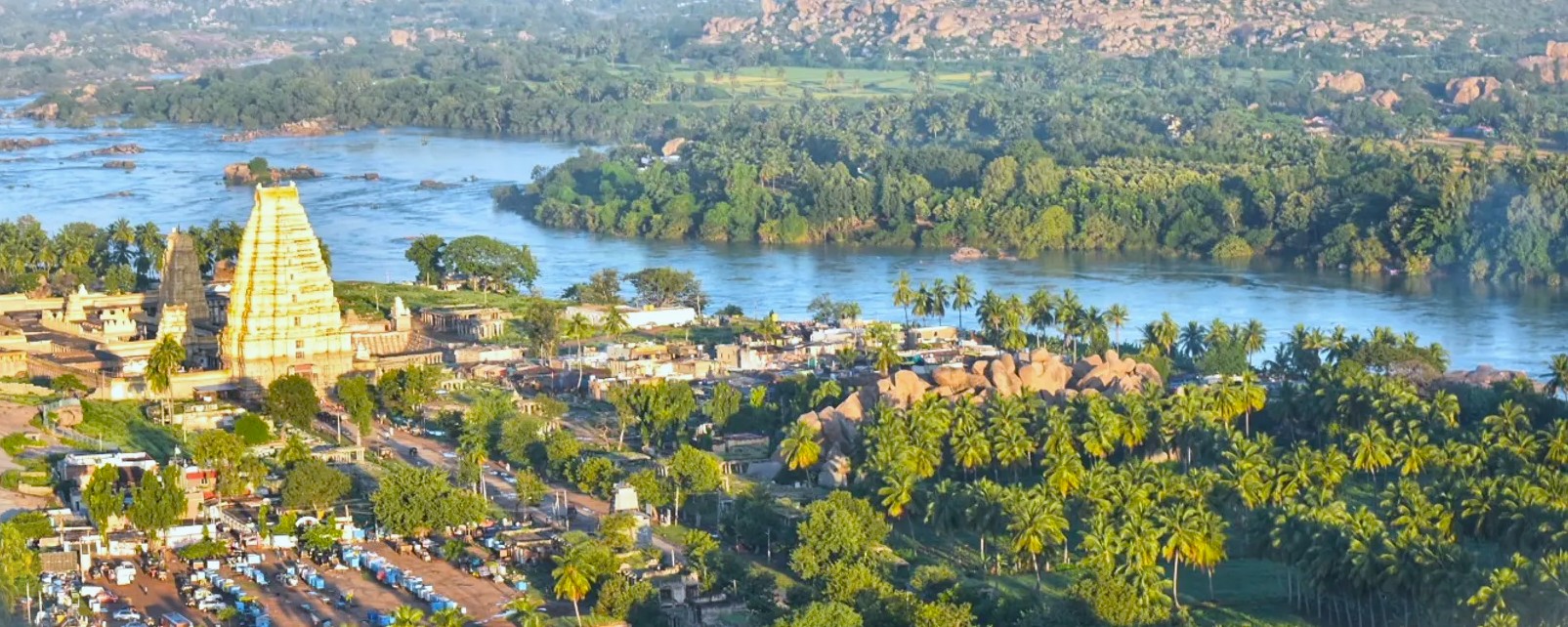
Hampi Ruins Karnataka India: Sacred Sites
Ancient lore identifies this dramatic, boulder-strewn landscape as Kishkindha, the monkey kingdom from the epic Ramayana. The city's documented history began in 1336 CE when it became the formidable capital of the Vijayanagara Empire. For over two centuries, Vijayanagara was one of the world's wealthiest and largest cities, a sprawling metropolis famed for its temples, palaces, and bustling bazaars that traded in gems, spices, and textiles from across the globe. This golden age came to a cataclysmic end in 1565. After a decisive defeat at the Battle of Talikota, an alliance of Deccan Sultanates sacked and destroyed the city over several months.
Hazara Rama Temple: The Sacred Abode of Rama
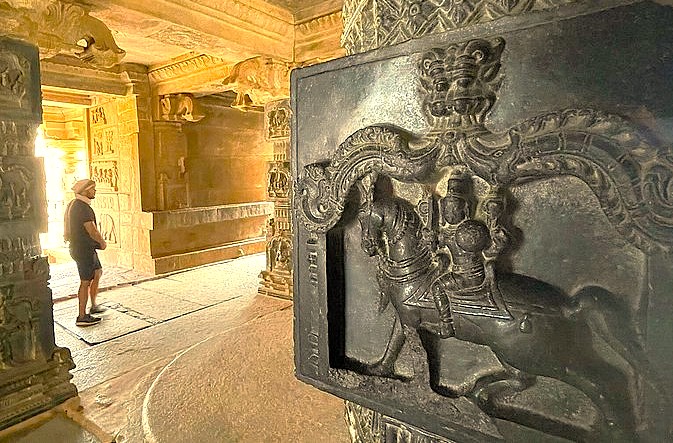
Built around 1513 AD, was originally a private temple used by the royal family of the Vijayanagara Dynasty for worship. Dedicated to Rama, the temple features intricate carvings depicting scenes from the Ramayana. The name "Hazara" means "a thousand," alluding to the extensive intricacies and the number of depictions within the temple. This temple has historical connections to King Krishnadevaraya, who was known for his devotion to Rama. His narratives are richly illustrated in the detailed bas-reliefs that adorn the temple's walls.
Hemakuta Hill: The Majestic Heights
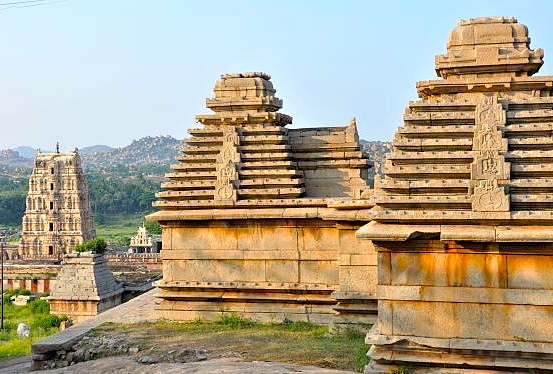
A significant site, with many ancient temples and intriguing ruins scattered across its peaks. Ascending its paths offers breathtaking, panoramic views of Hampi’s vast landscape, especially during the ethereal hues of sunrise and sunset. The hill hosts numerous shrines and other remnants from the glorious Vijayanagara period, including the unique Sivananda Temple, adding to its historical mystique. Historically, this elevated area was a fortified stronghold during the Vijayanagara reign and a revered pilgrimage spot.
Kadalekalu Ganesha & Sasivekalu Ganesha: Divine Icons
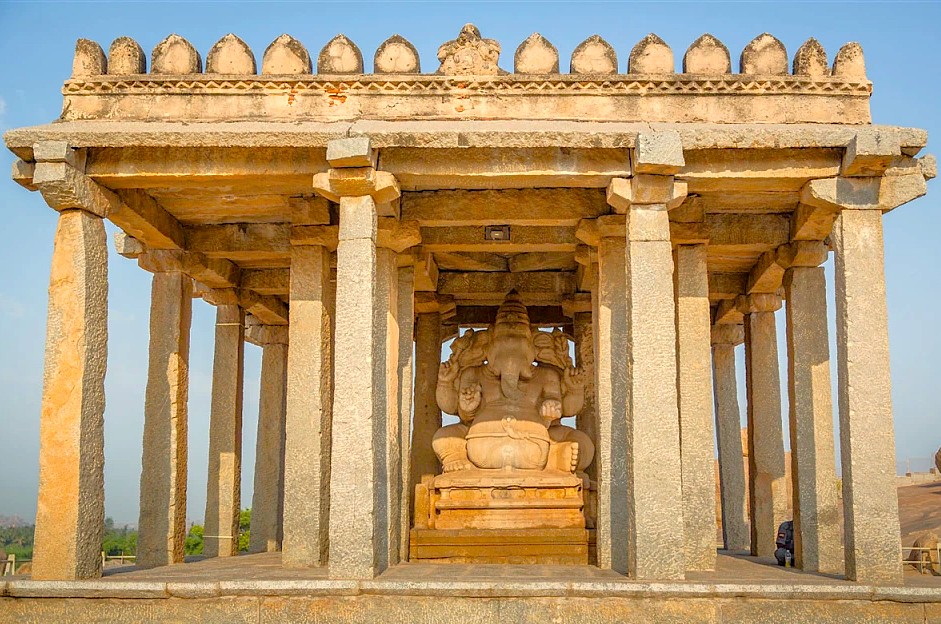
The two giant monolithic idols of Kadalekalu and Sasivekalu Ganesha, dating back to the 16th century, are essential to Hampi’s rich cultural heritage. These imposing figures embody the revered Hindu deity Ganesha, worshipped as the Remover of Obstacles, making their presence deeply significant in this ancient city. Kadalekalu Ganesha, whose name beautifully translates to "the one with a body like a gram," stands majestically within its own shrine, offering blessings to all who visit. Sasivekalu Ganesha, known as "the one with a body like mustard," is nearby.
Krishna Temple: The Divine Connection
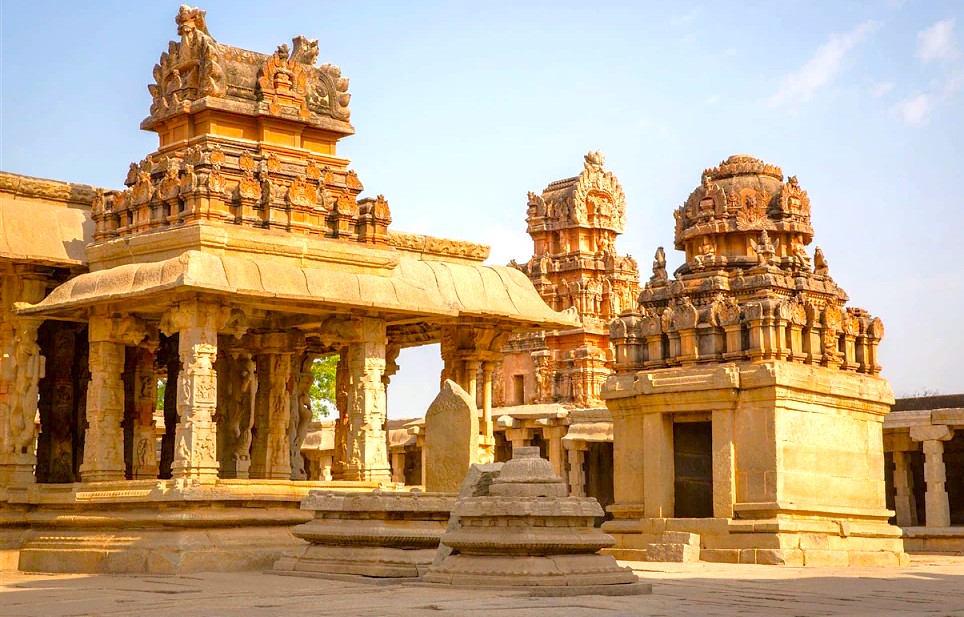
Hampi Ruins Karnataka India. The Krishna Temple, built in 1542 AD, stands as an exceptionally important site, reflecting the deep reverence for Lord Krishna during the Vijayanagara Dynasty. Commissioned by the illustrious King Krishnadevaraya himself, this magnificent temple is distinguished by its large and sacred idol of Krishna, which serves as the focal point of devotion. The entire temple complex is adorned with stunning, intricate carvings that enhance its beauty and profound spiritual significance. The Janmashtami festival, celebrating Krishna’s divine birth.
Achyutaraya Temple: The Mystical Sanctuary
Constructed in 1534 AD, the Temple stands as a magnificent testament to the unparalleled architectural brilliance of the Vijayanagara Dynasty. Dedicated to Lord Tiruvengalanatha, a revered form of Vishnu, this temple truly flourished under the generous patronage of King Achyuta Deva Raya. Its intricate design, often referred to as a blend of Dravidian and Indo-Islamic styles, showcases remarkable craftsmanship and aesthetic grandeur. The temple features stunning, detailed sculptures that vividly narrate captivating stories from Hindu mythology, bringing ancient tales to life in stone.
Virupaksha Temple: A Living Tradition
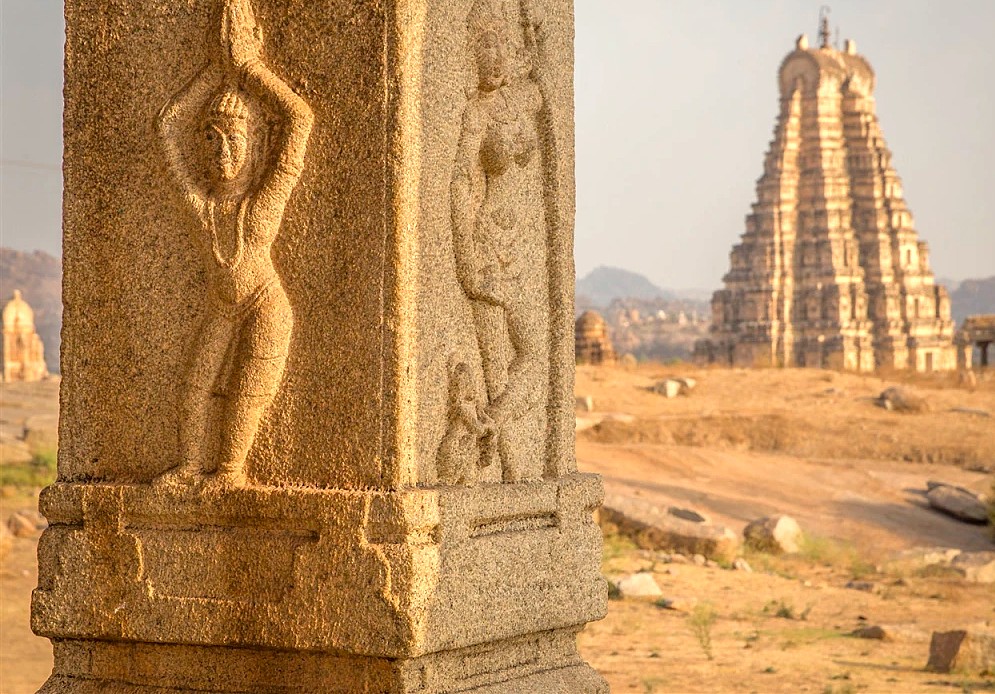
This Temple is one of the most important temples in Hampi and remains an active place of worship. Dating back to the 7th century, it is dedicated to Lord Virupaksha, a form of Shiva. The temple is an architectural wonder, with intricate carvings and gopurams. This temple serves as the focal point for the vibrant annual Chariot Festival, attracting devotees and tourists alike. The spiritual energy here resonates through its stones, reflecting centuries of devotion. The temple's historical connection to the Vijayanagara Dynasty adds to its significance, making it an example of the kingdom's heritage.
Vittala Temple: The Musical Marvel
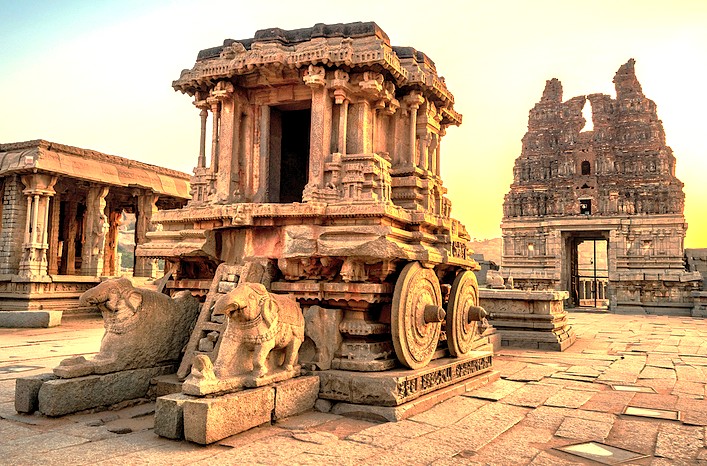
The Vittala Temple, built in the late 15th century, is famous for its exquisite stone chariot and unique musical pillars. This magnificent temple complex represents the zenith of Vijayanagara art and architecture, with its countless intricately carved structures and stunning, expansive layouts. Every corner reveals meticulous detail and grand design, showcasing the empire's wealth and artistic mastery. The stone chariot, beautifully resembles a traditional parade vehicle and powerfully symbolizes the agricultural prosperity that sustained the region.
Matanga Hill: The Sacred Viewpoint
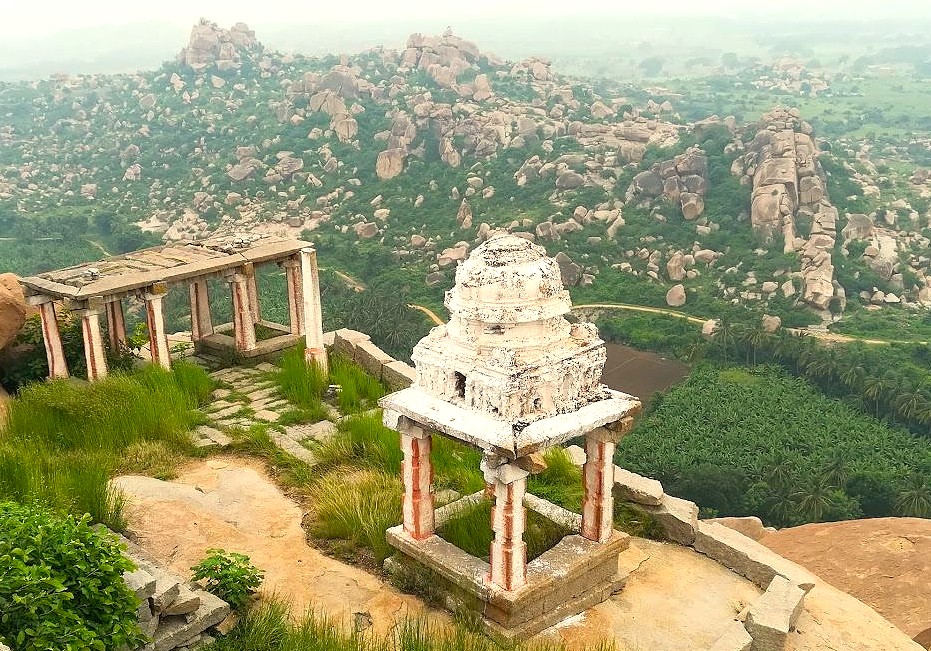
Hampi Ruins Karnataka India. Matanga Hill offers one of the best panoramic views of Hampi. Historically significant, this hill is believed to be the place where the sage Matanga performed penance. The hill has been a site of pilgrimage for centuries, with devotees often trekking to the summit during auspicious times. As a unique natural formation, Matanga provides a wonderful environment for taking in the magnifcent surroundings. Legends surrounding the hill speak of spiritual seekers who sought enlightenment in its serene surroundings. This connection to nature and spirituality still resonates with those who visit.
Elephant Stables: The Royal Enclosure
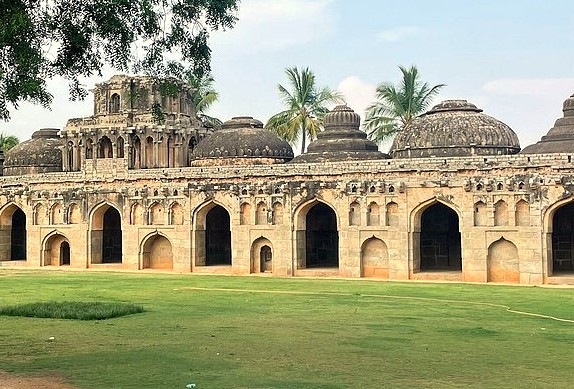
The Elephant Stables, built in the 16th century, served as the royal elephants' shelter of the Vijayanagara Dynasty. The structure features a distinct Indo-Islamic architectural style and is characterized by its impressive domes and ornate decorations. Each chamber was designed to accommodate a single elephant, showcasing the empire's organizational prowess. The stables reflect the grandeur of royal life and the importance of elephants in ceremonial processes. Using techniques that stand the test of time, the stables offer a glimpse into the luxurious lives once enjoyed by the royals.
Gagan Mahal: The Royal Residence
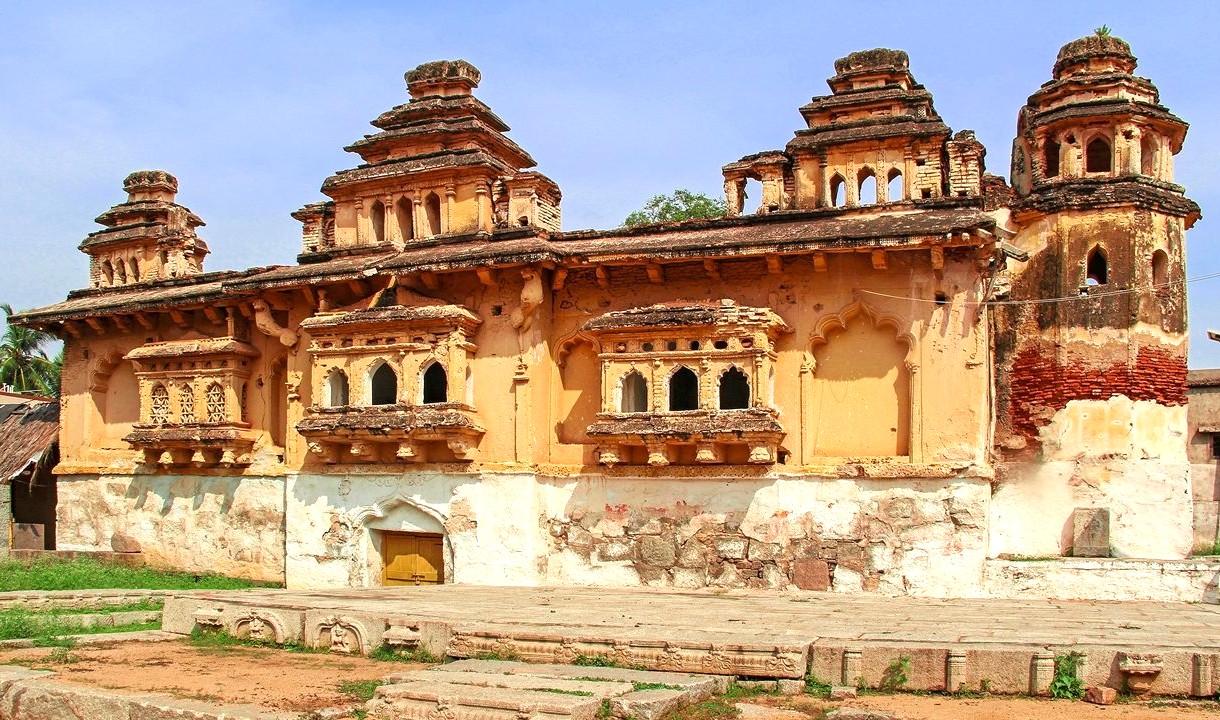
Gagan Mahal, or the "Sky Palace," is an elegant structure that served as a royal residence. Built in the early 16th century, it displays a fascinating fusion of Hindu and Islamic architectural styles. This unique blend truly signifies the cultural amalgamation of that vibrant era, reflecting a period of rich artistic exchange within the Vijayanagara Dynasty. Historical narratives tell us about its royal inhabitants, including Kings like Krishnadevaraya, who lived within its walls. The palace is defined by its ornate pillars and spacious halls.
Queen’s Bath: The Elegant Retreat
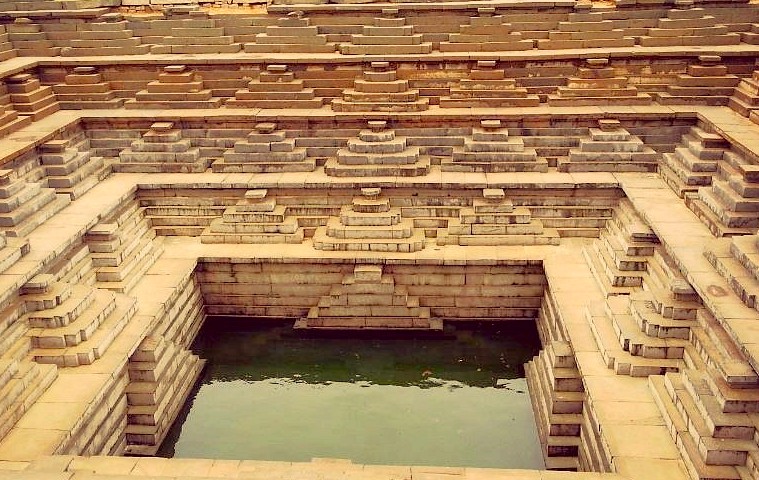
The Queen's Bath, dating back to the 16th century, is an incredible structure renowned for its aesthetic design and luxurious appeal. The inner walls were once adorned with intricate stucco work, though time has softened their grandeur. This exclusive bathing area was reserved solely for the royal family, vividly reflecting the opulent lifestyles and leisurely pursuits characteristic of the period. Historically, the Bath represented more than a place for cleansing, it was a serene sanctuary for relaxation amidst the busy, demanding life of the court.
Lotus Mahal: The Royal Lounge
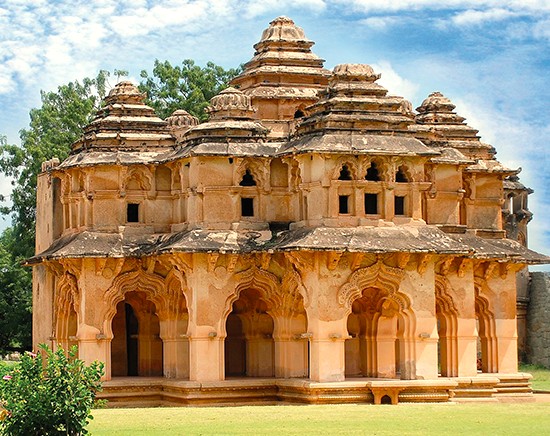
Hampi Ruins Karnataka India. This palace served as a leisure place for the royal ladies of the Vijayanagara Dynasty, aptly named after the lotus flower, a symbol of purity and beauty. Its intricate carvings and delicate motifs significantly enhance its elegance, creating a serene and captivating ambiance within its walls. As we explore the graceful ruins of this palace today, the air itself seems thick with whispers of its glamorous past, allowing imaginations to wander back to its glorious days. It truly stands as a testament to the sophisticated aesthetics and peaceful retreats cherished by the royalty, inviting quiet contemplation amidst its enduring beauty.
Holy Bay Leaf Brilliance, It’s India - Join Us
Let's step into the Lotus Mahal, a unique architectural marvel where Hindu and Islamic styles beautifully merge, constructed in the late 15th century. Here, we'll truly enjoy discovering the elegant leisure place once cherished by Vijayanagara's royal ladies, aptly named after the lotus flower symbolizing purity. As we explore these graceful ruins today, the air will feel thick with whispers of its glamorous past, allowing our imaginations to wander back to its glorious days. This palace truly stands as a testament to sophisticated aesthetics and peaceful retreats, inviting us to quiet contemplation amidst its enduring beauty. We'll definitely enjoy this timeless symbol of harmony and refined artistry.
The Mutual Benefits of Exchange
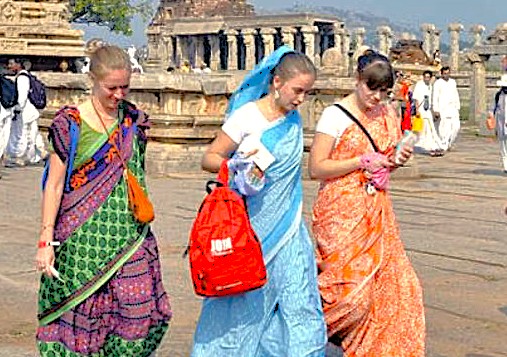
During our Hampi visit, the mutual benefits of exchange between us guests and the local community will truly enrich every moment. For us, this direct interaction offers an unparalleled opportunity for genuine cultural immersion, moving beyond typical sightseeing. We'll gain authentic insights into the daily lives, local traditions, and unique perspectives of Hampi's residents, perhaps discovering hidden gems and enjoying local cuisine shared with warmth. For the locals, our visit brings significant economic advantages, supporting the small businesses, artisans, and families who maintain Hampi’s living heritage.